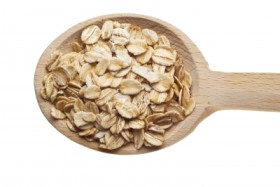How do I know if I’m gluten intolerant? by Mark Hyman
THERE ARE TWO WAYS TO TELL if you are gluten intolerant: an elimination/reintegration diet and blood tests. But first, let’s talk about what gluten is and why it’s a problem for so many people.
Gluten is a protein found in wheat, barley, rye, spelt, kamut, and oats. It is hidden in pizza, pasta, bread, wraps, rolls, and most processed foods. Clearly, gluten is a staple of the American diet.
Unfortunately it’s also linked to many diseases and conditions; a review paper in The New England Journal of Medicine listed 55 “diseases” that can be caused by eating gluten. These include osteoporosis, irritable bowel disease, inflammatory bowel disease, anemia, cancer, fatigue, canker sores, and rheumatoid arthritis, lupus, multiple sclerosis, and almost all other autoimmune diseases. Gluten is also linked to many psychiatric and neurological diseases, including anxiety, depression, schizophrenia, dementia, migraines, epilepsy, and neuropathy (nerve damage). It has also been linked to autism.
Gluten sensitivity is actually an autoimmune disease that creates inflammation throughout the body, with wide-ranging effects across all organ systems including your brain, heart, joints, digestive tract, and more. It can be the single cause behind many different “diseases.” To correct these diseases, you need to treat the cause–which is often gluten sensitivity–not just the symptoms.
To find out if you are one of the millions of people suffering from an unidentified gluten sensitivity, just follow this simple procedure.
The Elimination/Reintegration Diet
While testing can help identify gluten sensitivity, the only way you will know if this is really a problem for you is to eliminate all gluten for a short period of time (2 to 4 weeks) and see how you feel. Get rid of the following foods:
- Gluten (barley, rye, oats, spelt, kamut, wheat, triticale — see www.celiac.com for a complete list of foods that contain gluten, as well as often surprising and hidden sources of gluten.)
- Hidden sources (soup mixes, salad dressings, sauces, as well as lipstick, certain vitamins, medications, stamps and envelopes you have to lick, and even Play-Doh.)
For this test to work you MUST eliminate 100 percent of the gluten from your diet–no exceptions, no hidden gluten, and not a single crumb of bread.
Then eat it again and see what happens. If you feel bad at all, you need to stay off gluten permanently. This will teach you better than any test about the impact gluten has on your body.
There are also gluten allergy/celiac disease tests that are available through Labcorp or Quest Diagnostics. All these tests help identify various forms of allergy or sensitivity to gluten or wheat
This is only part of the story. Read the full article here: Gluten: What You Don’t Know Might Kill You.
Archives
Blog musings
-

Ollie’s Area
Carol always says she thinks I can talk and I d... -

Adventures in Prolo Therapy Continues Part 2
I recently had my sixth series of prolo therapy... -

5 Reasons High Fructose Corn Syrup Will Kill You by Dr. Mark Hyman
IF YOU CAN’T CONVINCE THEM, CONFUSE THEM. —Harr... -

Cuboid Syndrome
Recently I had the great displeasure of creatin...

